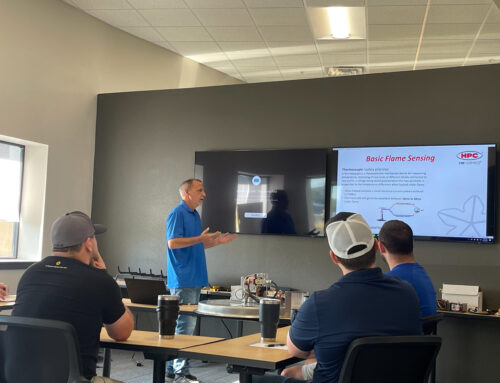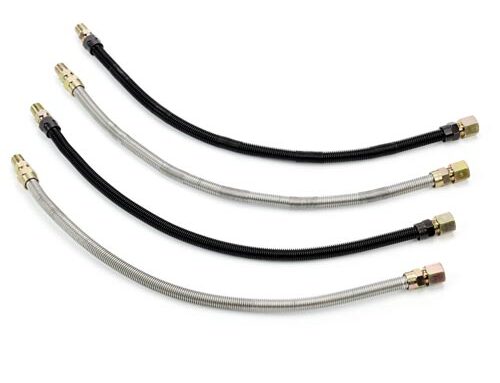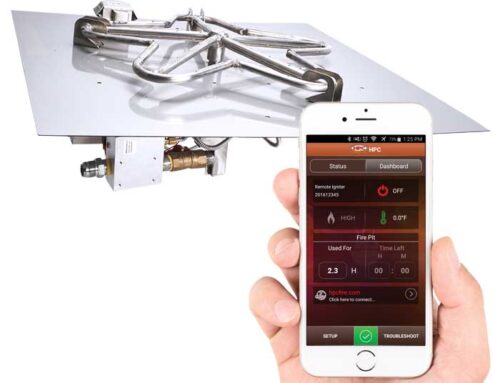As the chill of winter fades away and the warmth of spring beckons, homeowners eagerly anticipate spending more time outdoors. Embracing the opportunity to enjoy their outdoor tranquil oasis by utilizing their HPC gas fire features. While these outdoor elements offer comfort and ambiance, ensuring their safety and longevity requires diligent maintenance, especially as winter gives way to spring.

Importance Of Maintenance
During the winter months, gas fire features endure harsh weather conditions, from freezing temperatures to moisture accumulation. These factors can corrode components, weaken connections, and compromise the integrity of the system. Conducting a thorough inspection in spring allows homeowners to identify and rectify any damage or wear and tear that may have occurred. Regular maintenance also involves cleaning the burner and ensuring proper ventilation. Debris, such as leaves, twigs, and insects, can obstruct vents and burner ports, impeding the flow of gas and increasing the risk of malfunction or combustion. By clearing away debris and verifying adequate ventilation, homeowners mitigate the risk of gas buildup and associated dangers.
Safety First
One cannot overstate the importance of safety when it comes to gas fire features. Neglecting maintenance can lead to a myriad of safety hazards, including gas leaks, carbon monoxide emissions, and even fire outbreaks.
Spring maintenance provides an opportunity to inspect and address any potential issues before they escalate into safety concerns. HPC Fire Inspired recommends enlisting the help of a certified professional for annual inspections. This will ensure the safety and integrity of all the components of the fire feature. Professional maintenance offers the assurance of thoroughness and expertise, particularly when it comes to intricate tasks such as gas line inspection and leak detection. Trained technicians possess the necessary equipment and experience to accurately identify potential issues and address them effectively. Here are the top actions to take to keep your fire feature burning safe and bright:
- Inspection and Cleaning: Check for Wear and Tear. Inspect gas lines, connections, and valves for any signs of damage or leaks. Examine the burner assembly for corrosion or debris buildup. Remove debris such as leaves, twigs, or insects from the burner as well as from venting and drainage openings. Remove media and gently clean with soapy water allowing it to dry prior to replacing it in the pan.
- Testing and Safety Measures: Checking components is important to ensure the proper operation of the design. Be sure to refer to the manufacturing guidelines to verify proper maintenance steps. Enlisting a certified professional to conduct a thorough inspection for gas leaks, proper gas flow to the ignition system as well as proper ventilation will ensure the safe operation of the design.
- Maintenance of Ignition System: Checking ignition components by testing the ignition systems, such as the igniters and starters. Be sure to replace worn out components and batteries for controllers. Over the course of time dirt and debris can build up on sensitive components. One can utilize compressed air or a soft brush to remove the build up from these delicate components.
- Protection: Investing in a weatherproof cover to shield the fire pit from elements when not in use is a great way to add an extra layer of protection to your fire appliance when not in use. Also, be sure to stick to a regular burn schedule, by utilizing your fire design regularly it naturally rids the unit of any excess moisture.
Prolonging Lifespan
In addition to safeguarding against safety hazards, spring maintenance plays a crucial role in extending the lifespan of outdoor gas fire features. Like any mechanical system, these features require periodic upkeep to function optimally and withstand the test of time.
One of the primary enemies of gas fire feature longevity is corrosion. Moisture, coupled with exposure to the elements, can accelerate corrosion of metal components, such as burners, valves, and connectors. Regular maintenance, including cleaning and lubricating these parts, helps prevent corrosion and ensures smooth operation. One of the main ways HPC combats the risk for corrosion is utilizing high grade commercial stainless steel materials to form each component of every fire design. In addition, HPC stands behind our designs offering a lifetime guarantee on all pans and burners.
Regular maintenance allows for minor issues to be addressed promptly; preventing minor issues from escalating into major problems that necessitate costly repairs or premature replacement. By adhering to a routine maintenance schedule, homeowners not only enhance the performance and longevity of their gas fire features but also save themselves from the inconvenience and expense of unexpected repairs.
Conclusion
Spring maintenance is not merely a routine chore; it’s a vital aspect of responsible homeownership, especially concerning outdoor gas fire features. By prioritizing safety and implementing regular upkeep, homeowners can enjoy the warmth and ambiance of their gas fire features with peace of mind, knowing that they are well-maintained and built to last. Conducting Spring maintenance is an investment in both safety and longevity, enriching outdoor experiences for years to come.





